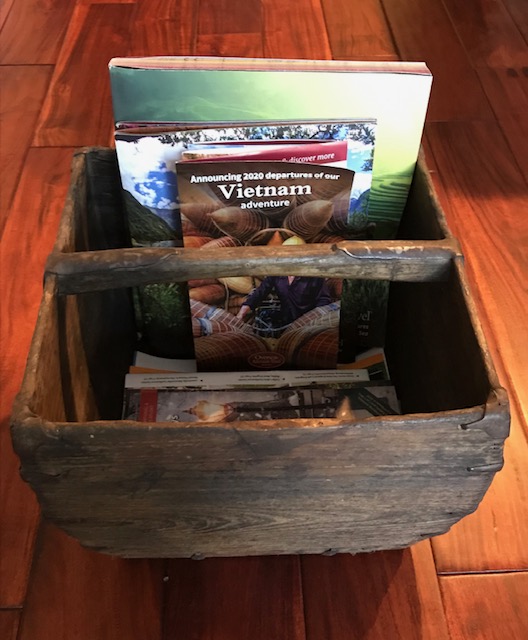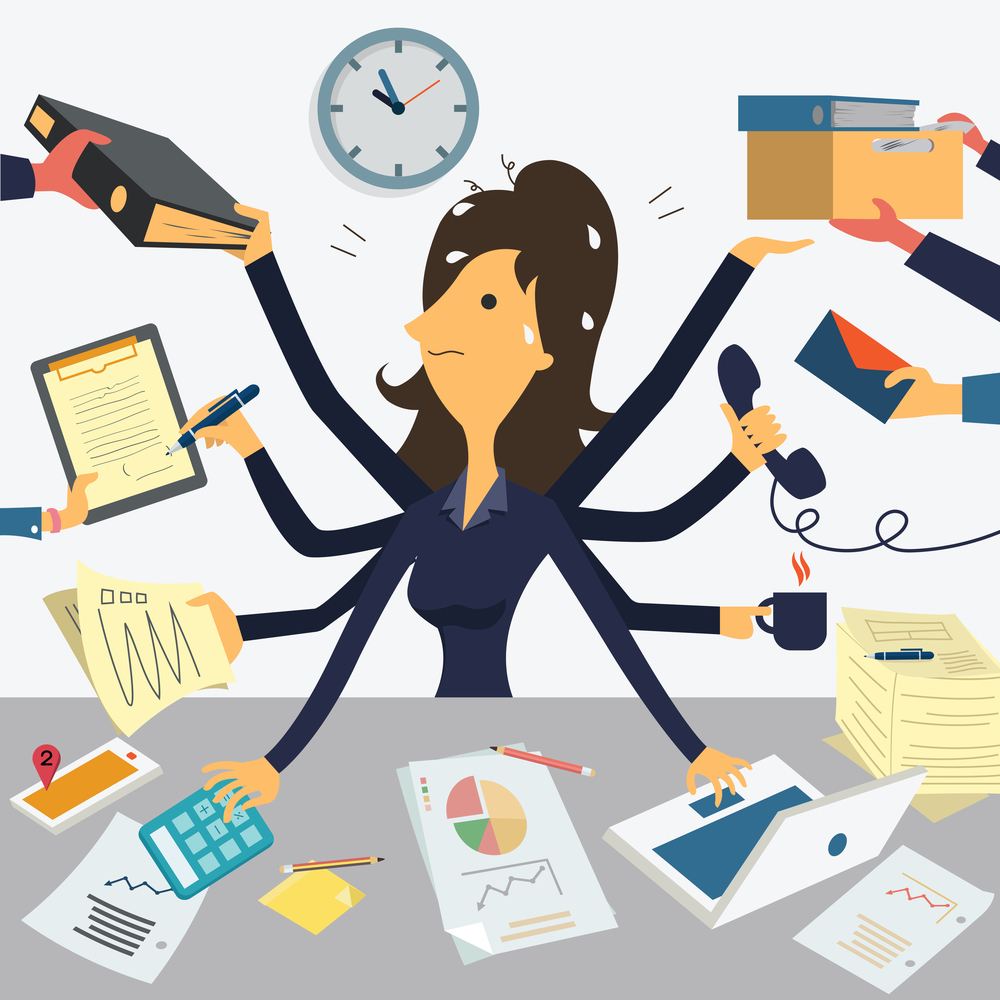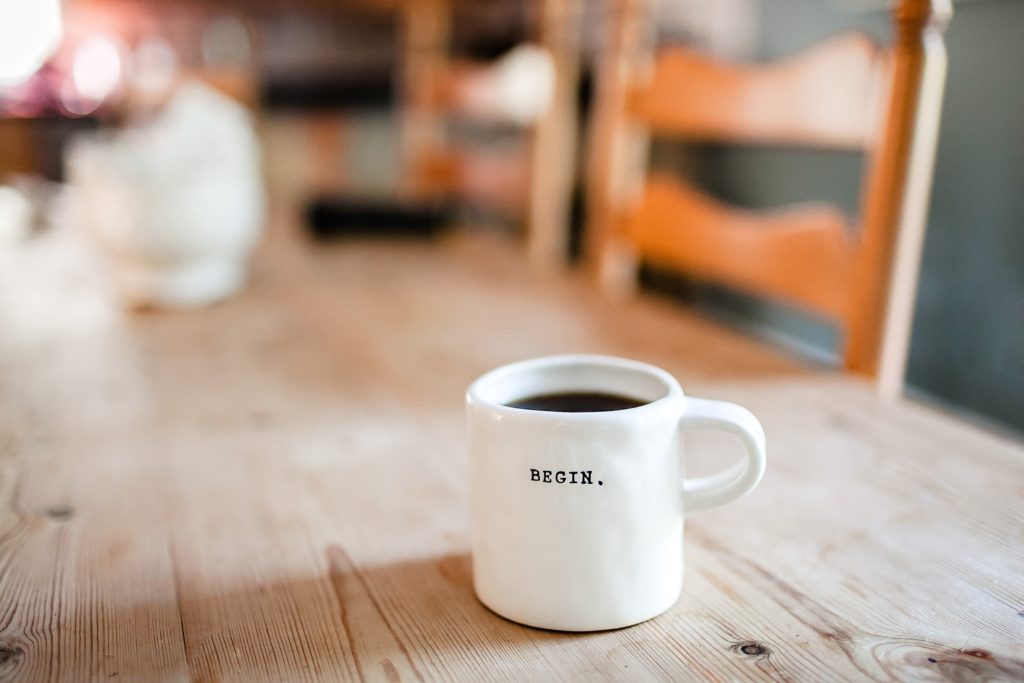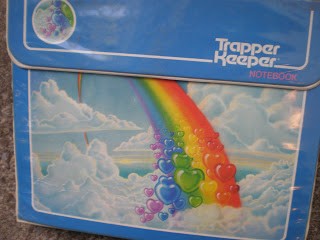There are times, I am sure, when you have an extra 15 minutes where you just want to sit, relax, and take a few deep breaths. There is certainly nothing wrong with self-care. However, self-care can also take on another form where you want to use those extra 15 minutes to get something done in your home or office.
In my world, of course, it has to do with de-cluttering and organizing. There have been a couple of times recently where I took that 15 minutes with a client and myself to do just that.
A client of mine moved into assisted living several months ago. During one of our sessions, as I was helping her unpack and organize, I had some extra time. I went through one of her end table drawers in the living room and was able to recycle and trash 95% of what was in the drawer – old catalogs, old address labels, etc. Now, I could make room for other items that were important for her to have nearby in her new life.

In my own life, I love to travel. I always have travel articles and catalogues that I keep in an antique rice holder box (pictured above). When I started going through my collection, I was amazed at what I could recycle – articles and catalogs that went back to 2016. Since the box never looked like it was totally overflowing, I just kept putting more articles and catalogs in it. As with my client, I was able to recycle 95% of what I had stored.
This led me to think what we can all do in 15 minutes to maintain our organizational systems. Maintenance and persistence always seem to be a huge challenge in the organizing world. Developing a system or process is 1 part of the project. Another part is maintaining or tweaking what you’ve already developed.
Consider what you can do in 15 minutes. You never know what you’ll find unless you go through these areas:
On any given day, we all make choices in our lives as to what to do with our time. With those extra 15 minutes that you have, you could sit back and relax or go through an area of your home or office to see what you no longer need. What is your choice today?
Why are some people able to get more done in less time? What’s their secret?
No secret. They’ve mastered how to manage their time.

What is Time Management?
Simply put, it means to effectively manage your time to do what needs to be done on time. Most people feel overscheduled, do not plan their time well, spend too much time on unimportant tasks and so on. It’s not a time issue; it’s an organizing issue. In most cases, proper time management is lacking.
“I definitely am going to take a course on time management…just as soon as I can work it into my schedule.” ~ Louis Boone
To maximize productivity, you must know and apply effective time-management systems and tools that work for you. Here are some proven ways:
Organization
If you’re disorganized, you cannot maximize your productivity. Your first step is to get organized.
Eat That Frog
“The first thing you do each morning is to eat a live frog.” ~ Mark Twain
The “frog” is your toughest, most important task. Twain’s point was to get it done first each morning and the rest of the day should be easier.
Task Batching
This means scheduling time to do similar tasks. For example, reply to emails from 2:00-3:00.
Active v. Productive
There’s a huge difference between busy and productive.
“Do not confuse motion and progress. A rocking horse keeps moving but does not make any progress.” ~ Alfred Montapert
I recommend watching this three-minute video, which nails it. It’s meant for older folks with ADHD but everybody can relate.
Multitasking
Forget it. According to Forbes.com, 98% of us don’t multitask well. We’re actually just shifting between tasks which takes our brain time to constantly refocus. Studies show multitasking can reduce productivity by as much as 40%. However, I say it works when one task is mindless and your focus is on the other one.
Procrastination
Delaying inhibits productivity. Be intentional, positive and focused on your objective.
To-Do List
Use one! It’s critical to note tasks in one place, on paper or your device, so you don’t forget.
To begin, implement one or two tips. Practice until they’re routine. Repeat. There’s no shortcut but, over time, you’ll accomplish more in less time. That means more time to spend at work, with family, to read a book, do yoga or on whatever you want!
© 2019 Adriane Weinberg. All rights reserved.
Ahhhh, can you hear it? Stop. Listen closely. Is that the sound of an empty house? Oh my goodness! Are you actually at home – alone? That’s right folks. The kids are back to school and that morning cup of coffee hasn’t tasted this good in almost longer than you can remember.
Thank you Fall for showing up – right in time to save us from completely losing any semblance of sanity! While you sit for an extra 5 minutes, enjoying the sound of silence and taking another sip-o’-joe, you may begin to look around.
What you are looking at is the aftermath of summer:
Amidst everyone else’s debris, there are some of your own items that need attention, yet it’s hard to know which and where they are. Here are 3 suggestions from a Professional Organizer and mom of three grown children:
Take these three small steps and enter Fall confidently prepared to harvest the rewards of the season.

As autumn approaches, mice look for warm homes with food and water in which to hunker down for the winter. Don’t let one of those homes be yours! At a recent NAPO-GPC* meeting, pest expert Dr. Dion Lerman shared tips on how to prevent, eliminate and clean up after those little rodents. Here are answers to questions you might not have known you had:
Are mice a health concern?
How do the rascals get in?
Where in the house do the critters live?
How can one prevent them from coming in?
What’s the best way to get rid of mice?
What’s the best way to safely clean up after the critters?
As with most things in life, an ounce of prevention is worth a pound of cure.

Remember the Trapper Keeper days? And the 5-subject notebook? We all used them as students but why don’t we use them today? The concept is still the same, it’s just the subjects have changed.
To-Do’s: Instead of subject, separate your to do’s into broad categories (personal, business, church for example). Use a 3 or 5 subject notebook as your one place to store it all. Create a system to prioritize like highlighting or numbering. Don’t forget about those to do’s that you keep putting off. Mix these in with some of your urgent ones.
Projects vs. To Do’s: There is a difference. Projects are made up of a lot of to do’s. That’s why a project can seem so overwhelming and never gets done. Break up that project and add those to do’s to your list.
Notebook vs. Stickies: Is your desk or computer overrun by sticky notes? Use the divided notebooks to keep track of your to do’s/ideas/projects. Stickies should be used temporarily. Regularly transfer that information to the appropriate section of the notebook.
There is no one way to keep track of your to do’s. Build upon the systems that are currently working for you. But take it one task at a time and be patient. Conquer a couple each day or set a time limit. And in today’s digital era, sometimes a good old notebook will do just fine. Just be sure that you don’t lose it because you can’t back it up!

People hire organizers because they feel their lives are out of control and they are unable to get organized on their own. Frequently the problem is simply having too much stuff to organize. Often the weight of too many possessions can wear us down. When our space is cluttered and dis-organized it can impact every facet of our lives.
When the burden of too much clutter is lifted from our shoulders, we can feel physically lighter, more energetic and less stressed. This relief can lead to increased work productivity, greater enthusiasm and better relationships.
The question we need to ponder is why do we purchase so much in the first place? There are a number of explanations for this compulsion. Often, we simply want to possess the latest and greatest stuff because we think it’s fun to own! We live in a consumer culture and we often validate ourselves by what and how much we can accumulate. Consumerism and materialism are promoted by advertisers in print and on TV and computers in the form of commercials. According to Annie Leonard who wrote, “The Story of Stuff”, the two main activities Americans engage in are watching TV and shopping. We are bombarded by advertising and are exposed to approximately 3,000 ads per day. We see more ads in a day then people saw in a year 50 years ago. Couple that with the fact that the average house size has doubled since the 1970’s and it becomes easy to see why we accumulate so much “stuff”.
Sadly, in order to maintain our lifestyles of consumption, many people are working 50+ hours per week. We work until we are exhausted and depleted and then we shop to make us feel better. We return home too tired to do much else than watch TV and the cycle begins anew!
Is this the way we really want to lead our lives? If so, fine. If not, then it’s time to rethink our goals and blithely step off that hamster wheel of consumption and examine saner options.
